

Matt Campbell
2026 MG U9 review
5 Hours Ago
It mightn't be a wild child like some of its rivals, but the Audi RS5 carves an appealing niche and offers blistering performance in all weather conditions.

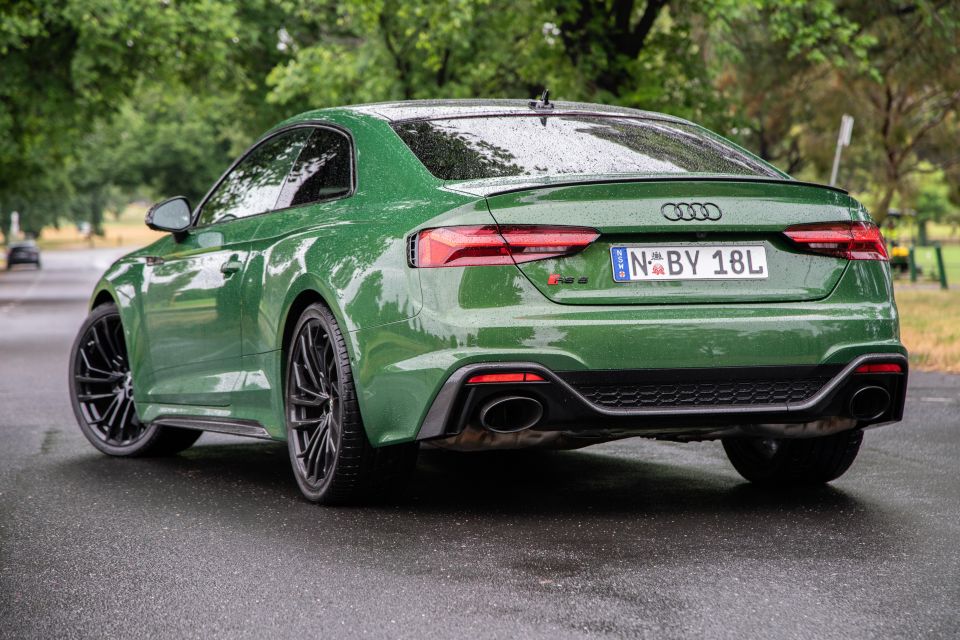

Contributor
New from
$150,900
excl. on-roads

Contributor
New from
$150,900
excl. on-roads


Contributor
New from
$150,900
excl. on-roads

Contributor
New from
$150,900
excl. on-roads
Quickly see how this car stacks up against its competition. Select any benchmark to see more details.
Where expert car reviews meet expert car buying – CarExpert gives you trusted advice, personalised service and real savings on your next new car.
Let’s get this out of the way early – the Audi RS5 is seriously handsome, especially in Sonoma Green.
It looks low and wide from the rear, and the flanks are crisp. The front end is angry, but not too angry. The lights are flashy, but not too flashy. It’s where aggression meets restraint.
That would be enough if this was a review of the regular A5 40 TFSI. But this is the RS5, the fire-breathing flagship tasked with taking on the Mercedes-AMG C63 and BMW M4, which means the sexy styling needs to be backed up by a sizzling engine and chassis.
The RS5 can’t just be nice, it needs to be nasty as well. Or does it?

Pricing for the RS5 kicks off at $150,900 before on-road costs, a handy $6800 less than you would have paid for the pre-facelift model and just $4000 more than the RS4 Avant with which it shares its engine. Who said style was expensive?
It’s also more than $20,000 less expensive than the Mercedes-AMG C63 S coupe, although the brute from Affalterbach does have 1100cc and two cylinders extra to play with.
The 2021 BMW M4 Competition is $9000 more expensive than the RS5, and is a more natural competitor than the entry-level M4 given it’s all-wheel drive and packs an automatic transmission.
In other words, the RS5 is about as much of a bargain as a $150,000 car can be… before you start adding options.
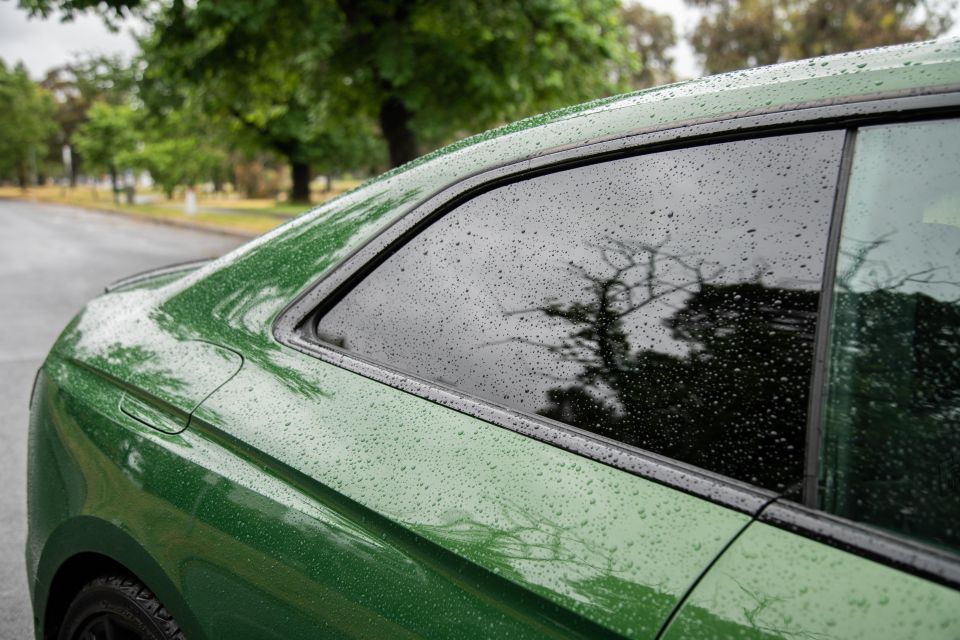
Our tester came in at $188,700 before on-roads, making less of a bargain. To blame (mostly) are the Carbon and Black Styling Package (carbon spoiler blade, side blades, side sill extensions, rear diffuser insert, mirror housings, lip spoiler, $11,200) and carbon ceramic brakes ($13,600).
Also added to our RS5 were 20-inch wheels in gloss black ($400), black Audi rings and badges ($700), a carbon roof ($4900) and engine cover ($1200), dynamic ride control and adaptive dampers ($4400), and carbon twill interior inlays ($1440).
Our advice? Don’t bother with the carbon ceramic brakes, nor the carbon roof and engine cover. It’s a yes to the adaptive dampers – they’re a must have – and if you’ve got the cash then the carbon exterior add-ons look seriously cool. But they’re not essential.
Realistically, you could pay $155,300 before on-road costs and walk away very, very happy.
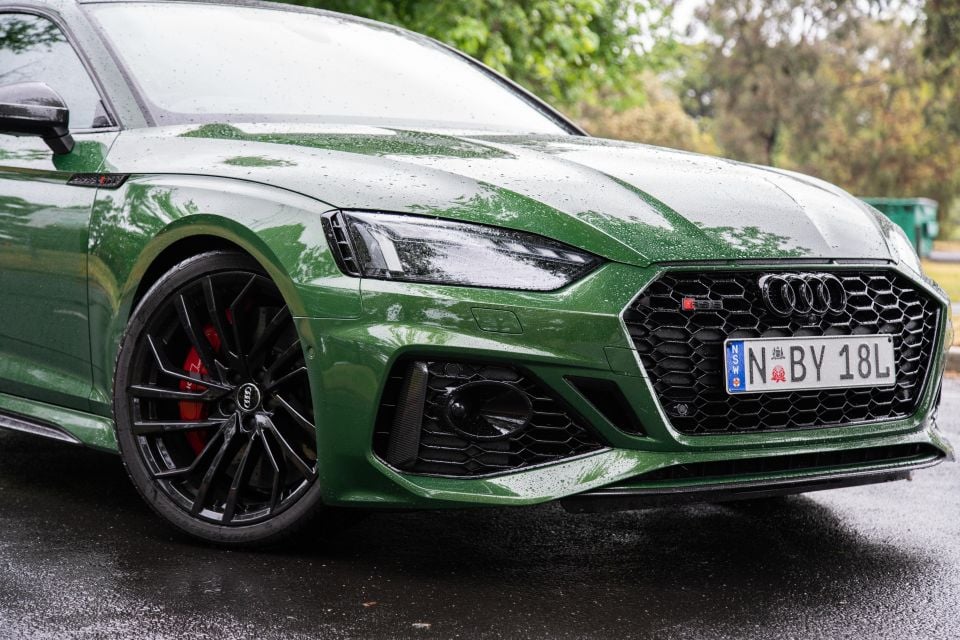
Buy your new car without the stress. It's fast, simple and completely free.

Great service from Travis and team, second time I have used this business would not hesitate to recommend them to anyone
Craig C.
Purchased a Ford Ranger in Sunshine Coast, QLD
CarExpert helped Craig save thousands on his Ford Ranger, now let us save you on your next new car.
Find a dealEven before you start ticking options the RS5 is well-specced.
For starters, it rides on five-spoke, 20-inch alloy wheels, behind which hide red brake calipers. All the exterior trim pieces are finished in gloss black, the windows are tinted, and there are Matrix LED headlights with scrolling indicators as standard.
Entry is keyless, the mirrors are dip and fold automatically, and cars without the carbon fibre roof instead get a panoramic sunroof as standard.
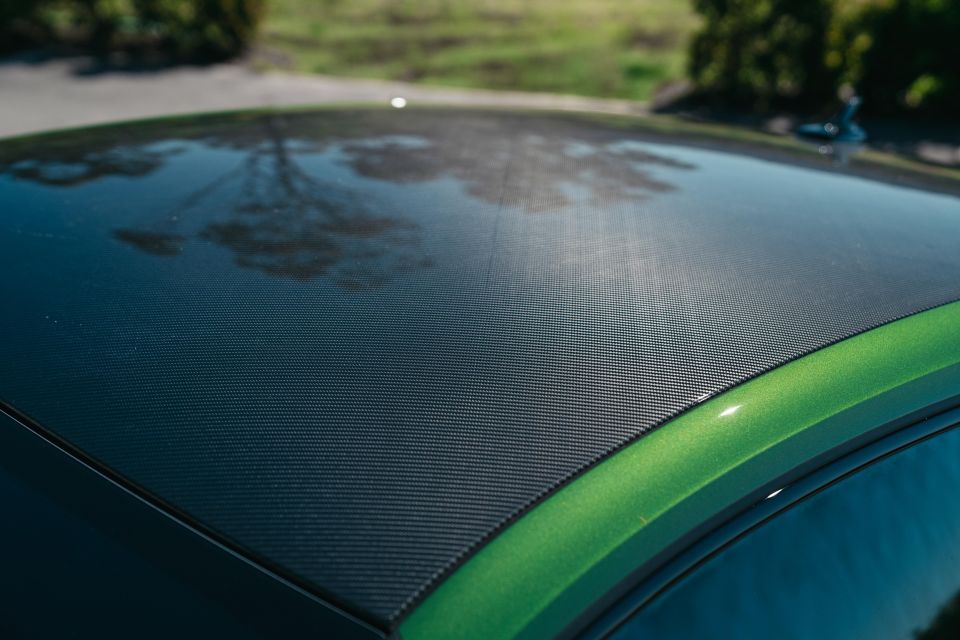
The interior is trimmed in extended Nappa leather with contrast honeycomb stitching, and the front seats are powered RS units with integrated headrests, heating, and massaging.
Audi RS highlights, from the stainless steel pedals to the kick plates, are scattered throughout.
Infotainment comes from a 10.1-inch touchscreen mounted high on the dashboard, complete with wireless Apple CarPlay and wired Android Auto, factory satellite navigation with live traffic updates, and Audi connect online services.
There’s a wireless charging pad hidden beneath the central armrest, a 19-speaker Bang & Olufsen sound system, and the excellent Audi Virtual Cockpit digital instruments.
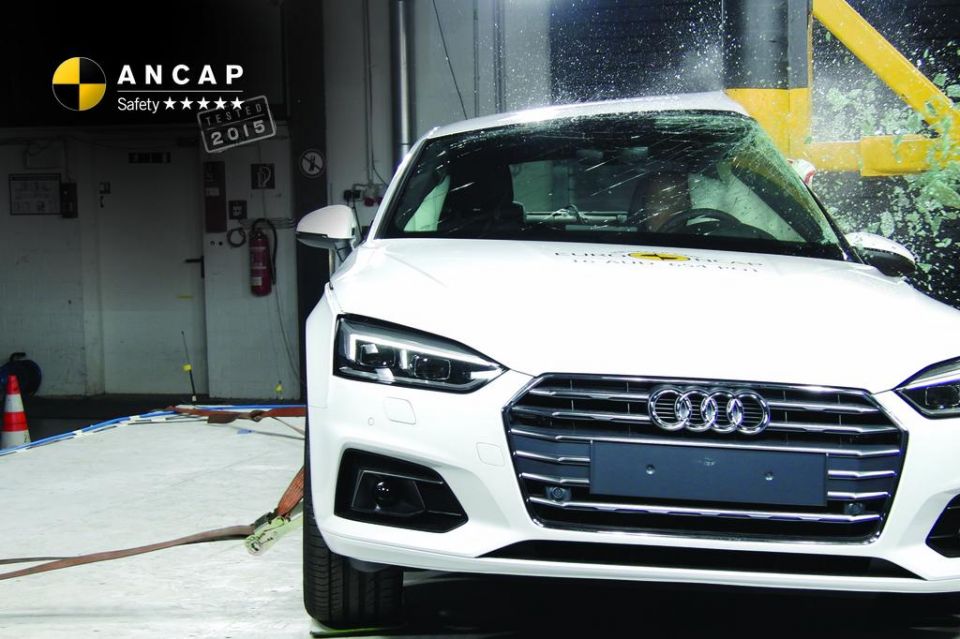
The Audi RS5 hasn’t been crash tested, but the more mundane A5 on which it’s based was put through the wringer in 2015 and awarded a five-star rating.
It was awarded 89 per cent for adult occupant protection, 87 per cent in child occupant protection, 75 per cent in vulnerable road user protection, and 75 per cent for safety assist.
The RS5 features advanced safety systems including adaptive cruise control with stop/go, traffic jam assist, and active lane assist with corrective steering intervention. It also has autonomous emergency braking up to 250km/h.
There’s collision avoidance assist, rear cross-traffic alert, exit warning system, blind-spot monitoring, and turn assist. Additionally, there’s a 360-degree camera view, and front and rear parking sensors. There are eight airbags on board.
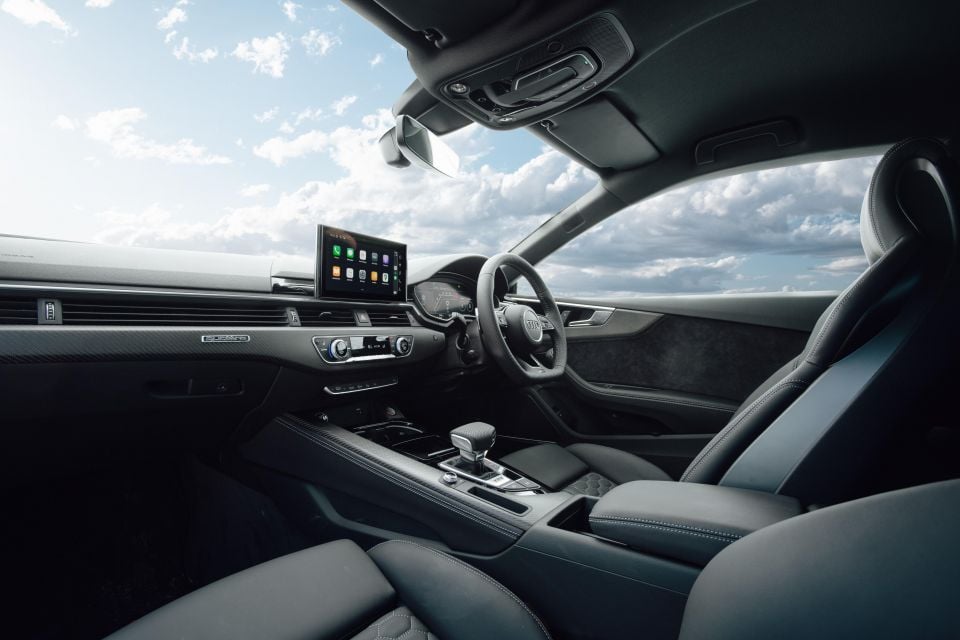
Not too much has changed since the RS5 launched in 2016, which is no bad thing.
For starters, the quality is off the scale. The driver and passenger sit RS seats trimmed in soft leather, complete with hexagonal contrast stitching in grey. There’s a neat balance of bolstering and comfort, aided by the fact they’re electrically adjustable, heated, and massage your back on long drives.
The seating position is good, with plenty of adjustment for the base, backrest, and steering wheel, but taller drivers might feel a bit like their head is up in the clouds. Being able to set the seat lower – properly, bum-dragging low – would make the RS5 feel less A4, more R8.
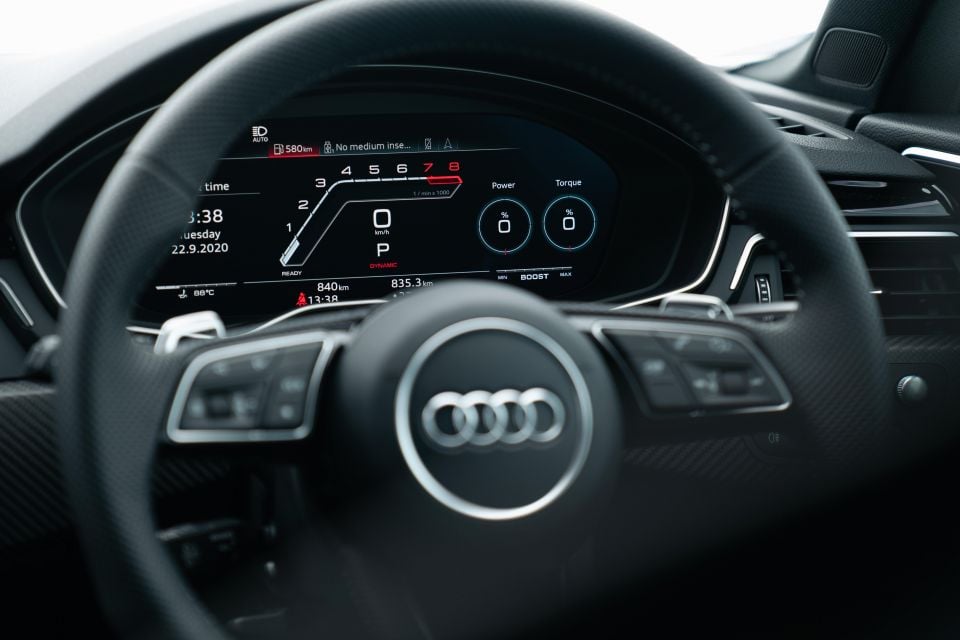
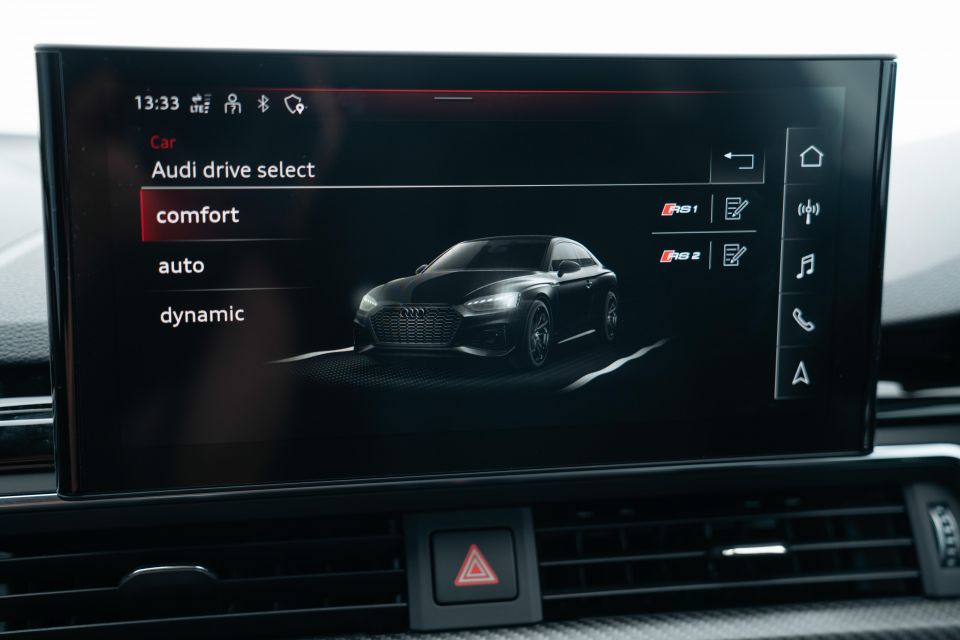
The motorised butler that hands you the seatbelt is a neat touch, lest you have to reach over your shoulder and grab it.
For all you touchpoint nerds out there, anything that looks like metal is metal, the woven carbon fibre trim is just the right amount of sporty, and the Alcantara trim on the doors provides a nice contrast with the leather and gloss black elsewhere.
New for 2021 is the enlarged (10.1-inch) touchscreen sitting atop the dashboard, running the same MMI infotainment system as the A6. That’s mostly a good thing. The icons are big and colourful, the responses are snappy, and the menus are all logically laid out.
Along with wireless Apple CarPlay and wired Android Auto there’s factory navigation and live traffic updates. Also standard is a 19-speaker Bang and Olufsen 3D sound system which is equal parts punchy and clear.
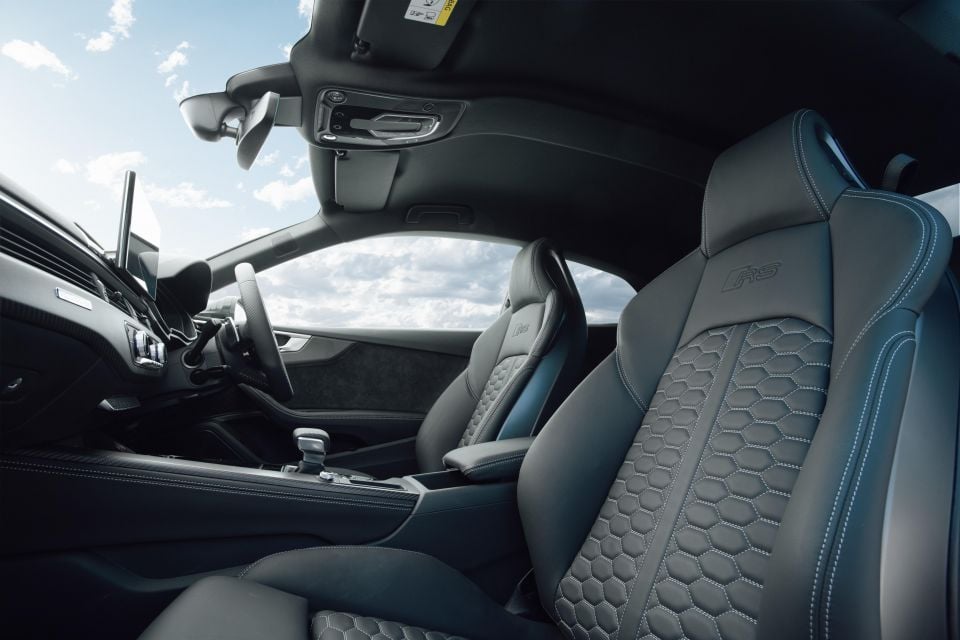
Unlike the A6, there’s no secondary touch screen sitting below the infotainment display. Instead, there’s a row of tactile toggle switches, two prominent (and satisfyingly tactile) rotary dials, and a small display. Although it’s not as flashy as the touchscreen in the A6 and co, it’s so much easier to use on the fly.
Sure, the touch-based controls in the latest range of Audi products are the best of their kind, but sometimes the old way is the best way.
That same logic doesn’t apply to the Virtual Cockpit, which can be set up to mimic old-fashioned instruments, or display a full-screen maps when the mood takes you. The RS displays are a neat touch, although if you’re really going quickly it’s tough to spend too much time staring at the boost gauge and temperature displays.
Although it’s a selfish two-door coupe, the RS5 isn’t what you’d call impractical. Actually, it’s far from it.
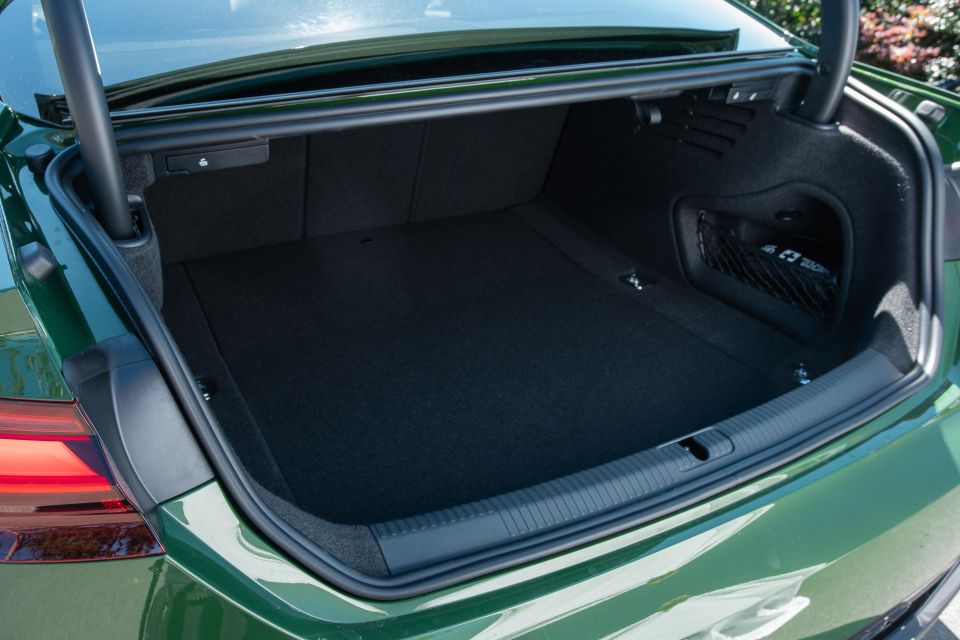
There’s two cupholders and an ashtray-sized space on the transmission tunnel, a wireless phone charger under the central armrest, and decent-sized door pockets for oddments and bottles.
Rear seat space is typically coupe-ish. Kids will fit back there, as will short adults. But realistically they’re part-time seats, best reserved for overnight bags.
If you’re coming from a TT, however, they’ll feel limousine-like. It’s all about perspective.
Boot space is impressive at 465L, with a broad opening and seats that fold flat if you need to cart big items. But if practicality is your main concern, the RS4 Avant shares its engine with the RS5 and is a better bet.
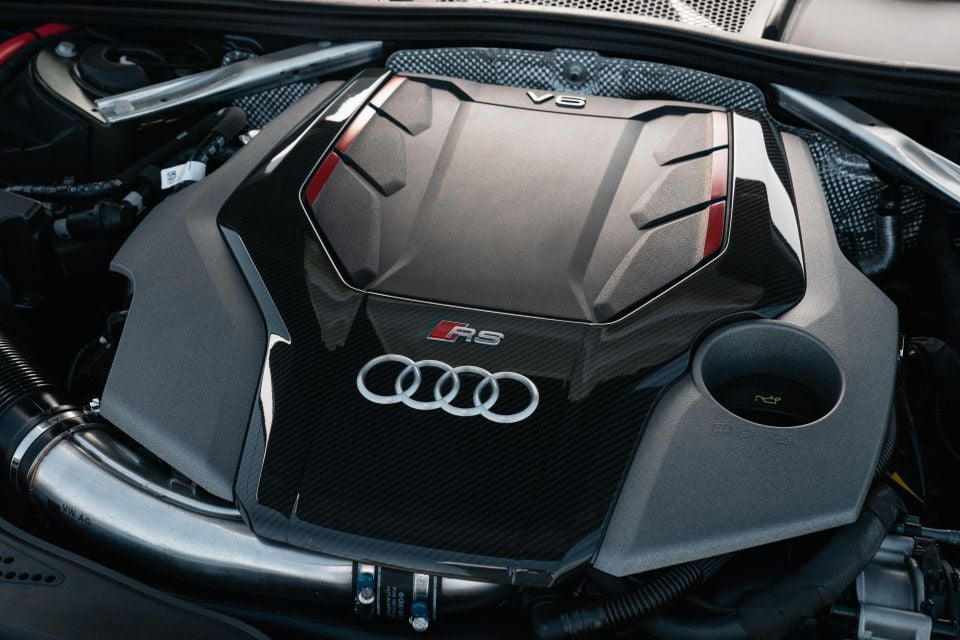
Under the bonnet of the RS5 is a twin-turbocharged 2.9-litre petrol V6 engine making 331kW of power and 600Nm of torque.
It’s all-wheel drive and packs an eight-speed torque converter automatic as standard. The 100km/h sprint takes a claimed 3.9 seconds.
Claimed fuel economy is 9.4L/100km on the combined cycle, but we saw closer to 12.0L/100km in a week skewed to city driving and RS mode.
In other words, it’s efficient enough given the performance on offer, and green enough to get away with that exterior finish.
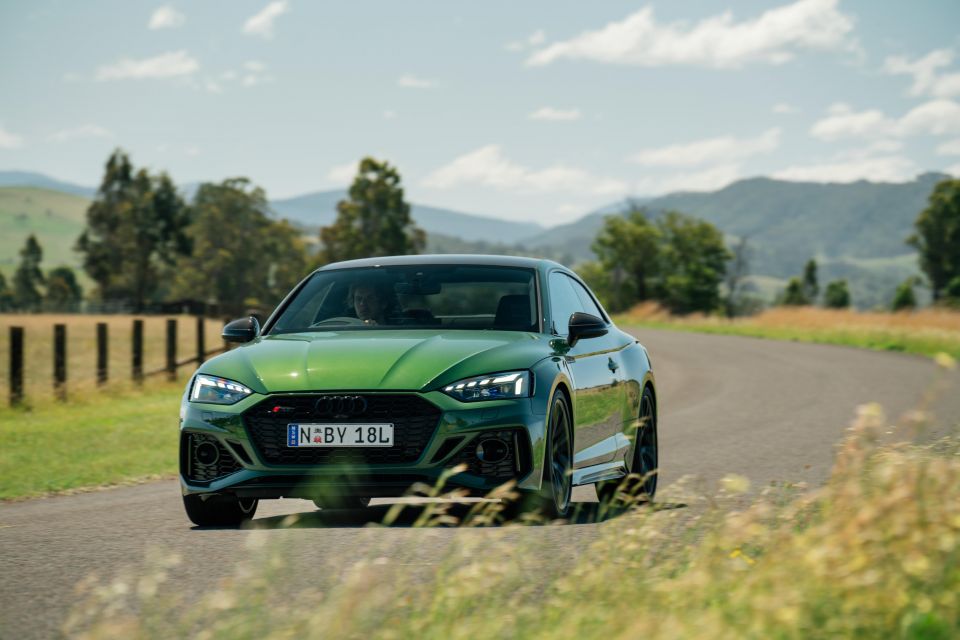
With a sticker price nudging $190,000 before on-roads, the Audi RS5 isn’t cheap. But you almost get two cars for the price of one, which makes it seem like a slightly better deal.
Car number one is a relaxed cruiser. With the adaptive dampers set in comfort mode, the steering in its most relaxed setting, and the torque converter slurring from gear-to-gear, the RS5 is impressively easy to drive day-to-day.
The steering is light, and the ride is genuinely impressive for a car riding on 20-inch wheels wrapped in liquorice-thin rubber. Body control is tight, but it soaked up the worst Melbourne could throw at it without ever feeling anything other than utterly composed.
Although it fires with a flourish and the gearbox can bark on medium throttle upshifts, the turbo’d engine is light on theatrics for the most part. It isn’t light on punch, though.
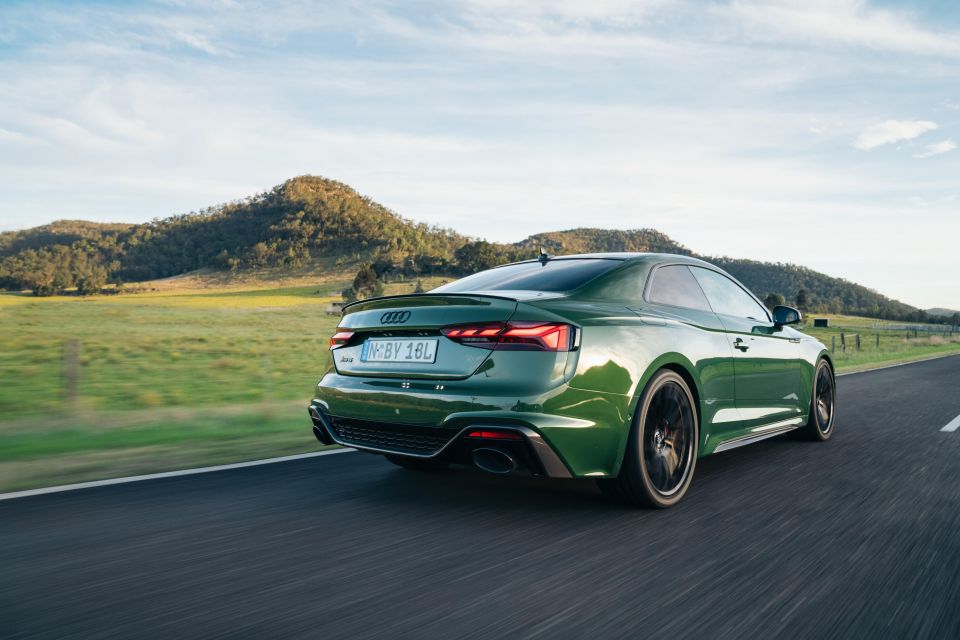
Breathe on the accelerator and it’ll effortlessly catapult the RS5 into the next suburb, pulling hard from just off idle. Peak torque kicks in at just 1900rpm and hangs around until 5000rpm, so unless you’re sitting in seventh gear at silly school zone speeds, there’s always thrust on offer.
The second car is angrier. Pressing the little RS button on the steering wheel toggles the car into one of two RS modes, each of which is configurable by the driver. RS1 in our tester flicked everything into its raciest mode, RS2 cranked the engine and transmission to 11 but left the steering and suspension in their more relaxed settings.
RS1 is like giving the RS5 a triple espresso. It gets firmer, faster, and louder – but it never turns into an outright hooligan. It’ll absolutely demolish a road in essentially any weather, though.
Our week with the RS5 was marred by what the Audi marketing department would call ‘Quattro Weather’. It just rained, and when it wasn’t raining it was pouring.

Where expert car reviews meet expert car buying – CarExpert gives you trusted advice, personalised service and real savings on your next new car.
The amount of traction on offer in shocking conditions is staggering. Bury the throttle and it just gets on with the job in a straight line, digging in its claws and lunging for the horizon.
It feels every bit as fast as its 3.9-second sprint to 100km/h would suggest, even when it’s raining sideways.
There’s a lot of cleverness going on under the skin to make it happen. The standard Quattro all-wheel drive system sends 60 per cent of its torque to the rear axle as standard, but can push up to 70 per cent to the front axle when conditions demand it.
Beyond the simple front/rear split, the Sport Differential fitted to the rear axle of our tester can send up to 85 per cent of the torque on that axle to a single wheel.
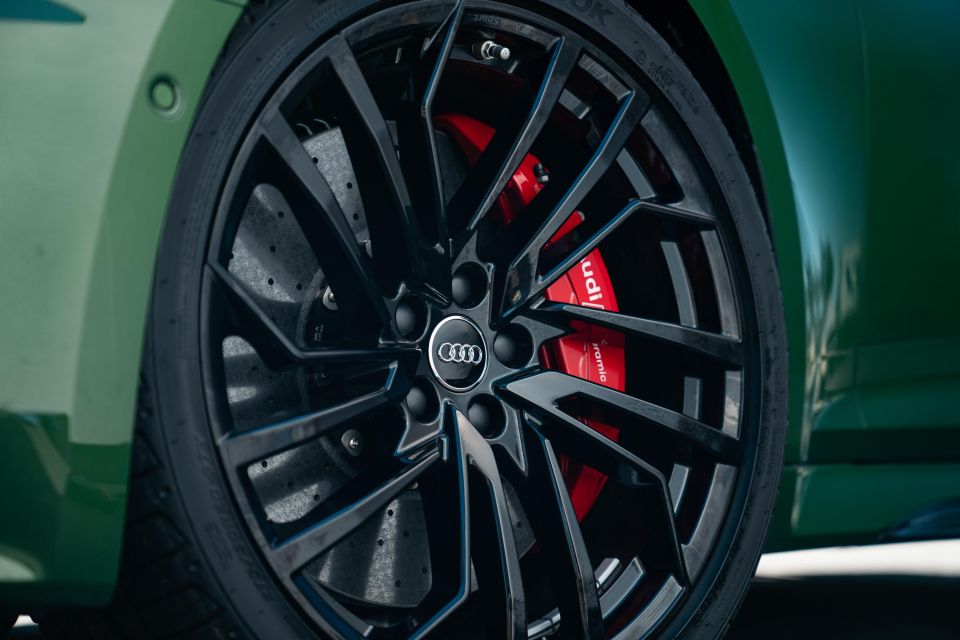
The upshot? Squeeze the accelerator around a slick roundabout and you can feel torque going to the outside rear wheel while there’s steering lock wound on, helping pivot the car, and then shuffling it forward as the steering straightens to help slingshot you out.
Oversteer isn’t really on the menu, but the steering is precise and the nose keen to turn. It never feels playful, but it’s ferociously effective.
Speaking of which, the optional carbon ceramic brakes are impressive. I’d never driven a car with carbon ceramics, and was expecting them to be a bit grabby in the city, but the RS5 stops smoothly at low speeds – and quickly when the speed rises.

Audi still offers a three-year factory warranty, unlike the five-year coverage offered by Mercedes-Benz, Volvo, and Genesis.
Servicing plans are relatively simple. The RS5 Sportback and RS4 Avant are offered with a five-year scheduled service plan for $3050.
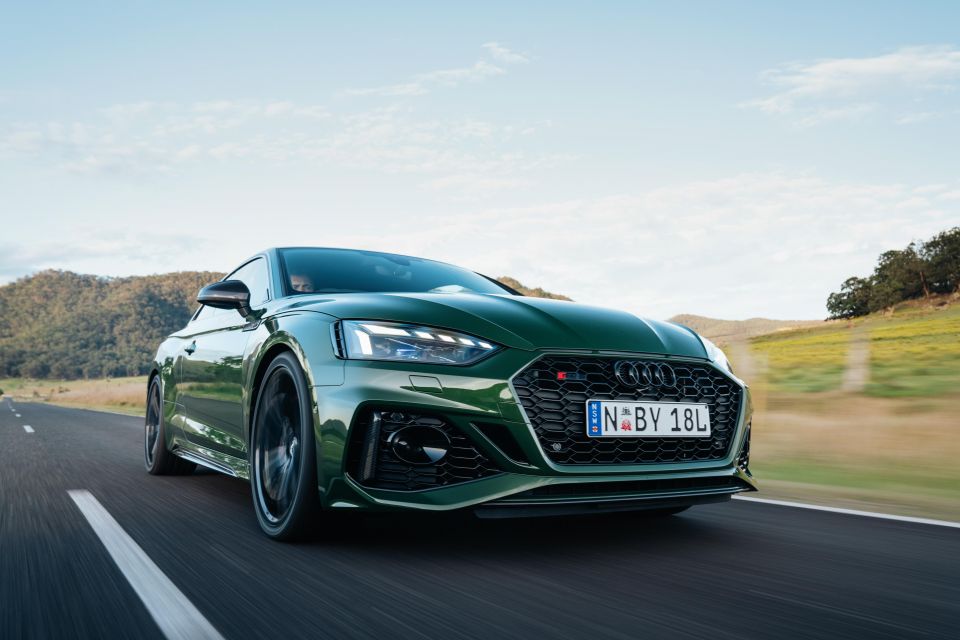
It’s very pretty and very fast, but the Audi RS5 isn’t a sports coupe in the same mould as the BMW M4 or Mercedes-AMG C63 S.
The twin-turbo V6 isn’t light on punch, but it lacks the character of the inline-six in the last BMW M3 or the thumping V8 in the C63 S.
The all-wheel drive system makes for ruthless progress in any weather but it’s light on tail-out theatrics, and the interior is beautifully fitted out but perhaps slightly light on drama.
Yet to write the RS5 off as boring would be missing the point. Especially in green, it’s a very likeable way drive a long way and make a statement while you’re doing it.
Just be careful with the options. Don’t bother with the carbon ceramic brakes, and opt for the adaptive dampers.
Click the images for the full gallery
MORE: Audi RS5 news and reviews MORE: Audi news and reviews
Where expert car reviews meet expert car buying – CarExpert gives you trusted advice, personalised service and real savings on your next new car.
Scott Collie is an automotive journalist based in Melbourne, Australia. Scott studied journalism at RMIT University and, after a lifelong obsession with everything automotive, started covering the car industry shortly afterwards. He has a passion for travel, and is an avid Melbourne Demons supporter.


Matt Campbell
5 Hours Ago


William Stopford
21 Hours Ago


Josh Nevett
22 Hours Ago


Ben Zachariah
2 Days Ago


CarExpert.com.au
2 Days Ago


Damion Smy
2 Days Ago